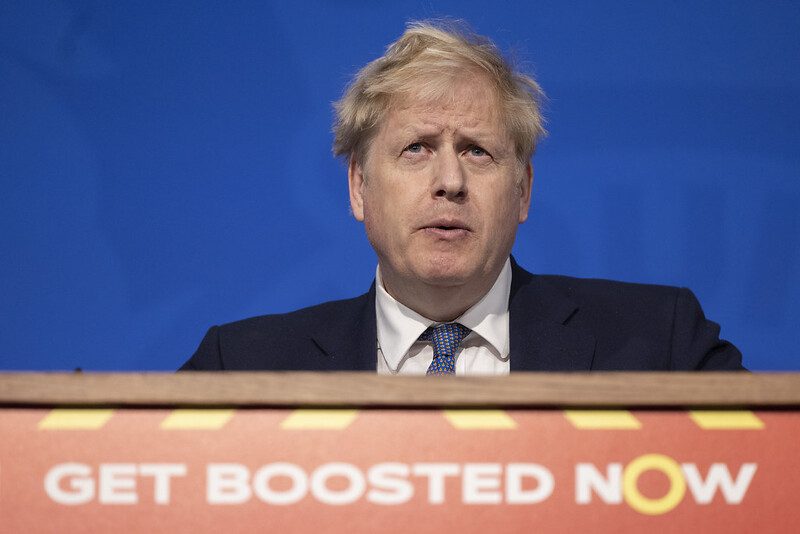Another week, another party. No, not Gina Miller’s new “True and Fair Party”, but the revelations of another party in Number 10 – this time leading to an admission of his presence and an apology from the Prime Minister. As of yet, there has been no formal action to remove Johnson, and it is unlikely there will be any – either from his party or Parliament – until the conclusion of Sue Gray’s report on Downing Street parties, but with poll number tanking, could it be the end for Boris Johnson’s premiership?
Swept to power in 2019 on a wave of pro-Brexit support from within his party, Boris Johnson replaced Theresa May, who had been pushed out by her own backbenchers in a fashion similar to what Boris Johnson is supposedly now facing. His 80-seat majority in December 2019 saw the largest Conservative victory since the 1980s and made him a prime minister who would be practically untouchable. Often maligned, even by his own party, it was Johnson’s sheer brilliance at the ballot box – which swept him to two victories in a Labour-oriented Mayor of London seat – that saw him granted bandwidth.
Still today, many Conservative MPs are backing him. Priti Patel’s leaked text message to fellow MPs, and Michael Gove defending him before the 1922 Committee are just a flavour of the rallying round that many Tory MPs are doing. Yet, there are others; four backbenchers have confirmed they have submitted letters of no confidence to the chair of the 1922 Committee, and several others are suspected.
The 1922 Committee are the backbench group of Conservative MPs and it is they who hold the power as to Johnson’s future. If 15% of Conservative MPs submit letters of no confidence, a leadership election is triggered – this is what ousted Theresa May in 2019 and lead to her tearful resignation on the steps of Downing Street.
Following the by-election defeat in North Shropshire, and the removal of the whip from Anne Marie Morris over her support for a Labour VAT cut bill, the total number of letters needed to force a leadership election stands at 54.
An analysis by Election Maps UK shows that of the confirmed and suspected, 9 letters have been submitted, around 3% of the Conservative Parliamentary Party. 34 are also confirmed not to have submitted letters.
However, the number may in fact be higher. At least 27 of the 31 Conservative Members of the Scottish Parliament – including the leader of the Scottish Conservatives, Douglas Ross – are calling for Johnson to resign, suggesting resentment in the party may be far greater than is being let on. Letters of no confidence are by their nature secretive and only Sir Graham Brady, the Chair of the 1922 Committee, knows the actual number.
This could be especially stark as polling numbers collapse yet further for the Conservatives, meaning many MPs would find themselves out of Parliament at the next general election.
YouGov polling conducted prior to Wednesday’s Prime Minister’s Questions – where Sir Keir Starmer called for the resignation of Boris Johnson – gave Labour a 10%-point lead over the Conservatives, the highest figure recorded since 2013.
A model produced by Election Maps UK would hold that based on the current numbers, the Conservatives would lose as many as 141 seats if a general election were held tomorrow, with Labour becoming the largest party. Starmer would still be short a majority but would be some 92 seats ahead of the Conservatives, the largest swing towards Labour since the 1997 general election.
https://twitter.com/ElectionMapsUK/status/1481403686546989063?ref_src=twsrc%5Etfw”>January
It is this that could spell the end of Johnson’s premiership more than anything else. The ballot box virtuoso, that many MPs tolerated but never liked, could lose his one trump card; from there, a collapse is inevitable.
It is almost certain that if Boris Johnson vacates Number 10, it will be due to his own party. No Conservative prime minister, perhaps since Churchill in 1955, has left office on their own terms – with the exception of David Cameron, who chose to submit his resignation, albeit after his Brexit gamble made his position untenable. Theresa May, Margaret Thatcher and Edward Heath were all removed by their party, and John Major and Alec-Douglas Home were both defeated at the ballot box. Harold MacMillan and Anthony Eden were both forced to resign following government scandals with the Profumo Affair and Suez Canal crisis respectively.
We won’t know the future of the prime minister until Sue Gray completes her report; which likely will not be until next week at the earliest. With the prime minister now isolating after a family member tested positive, it is also likely he will avoid another PMQs style grilling until next week too, but it won’t stop the poll numbers from coming through and making his MPs nervous.
Polling from before the latest Party Gate scandal gave Labour a 16%-point lead in the ‘Red Wall’ constituencies that Johnson won in 2019, meaning they could lose every single one of them. That is bound to create nerves on his benches and could result in them believing a fresh leader is needed to boost their chances.
This is ahead of the local election in May, which (if he limps on until then) could spell more trouble for the leader and pierce the electoral success that his leadership has relied on. With a number of council elections throughout the country, a significant collapse in Conservative support could harden the fears amongst his backbenches that Johnson’s leadership could threaten their careers.
Johnson’s greatest challenge in the coming months will be to prove to his party that he is still an asset, not a drain. If he cannot do this, the 54 letters may well be reached, and the UK could be heading for its fourth Conservative prime minister in 6 years.



